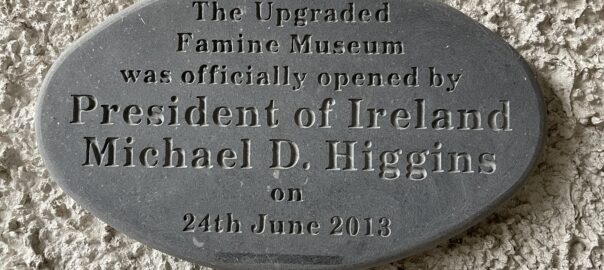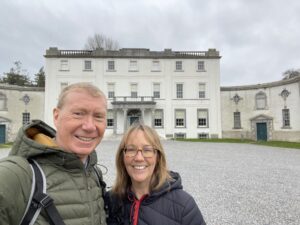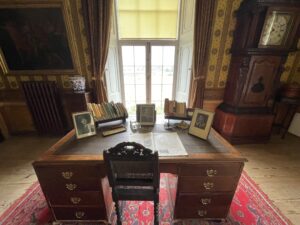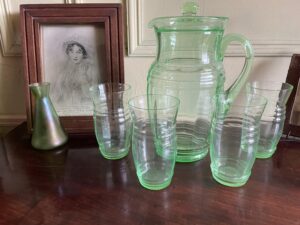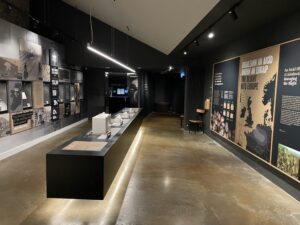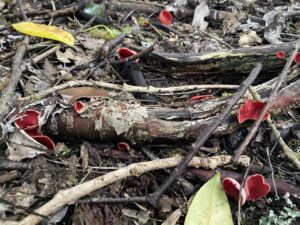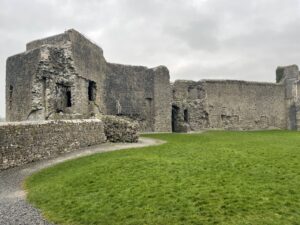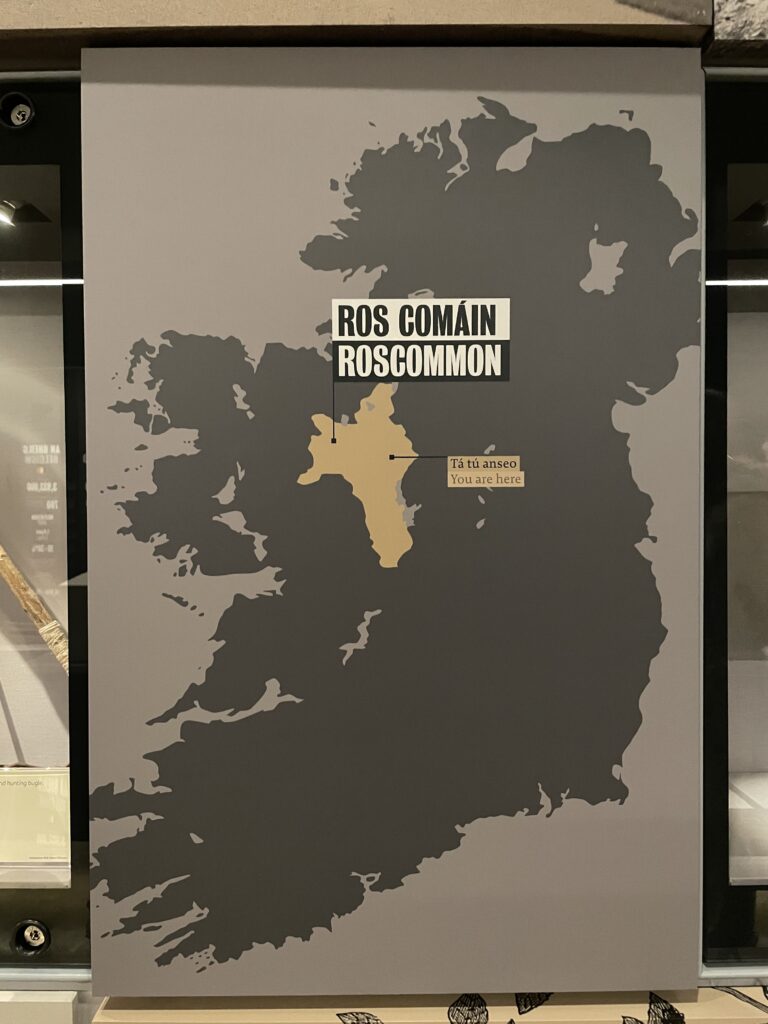Ireland day 0893. Saturday 09 March 2024- Famine
| Today’s summary | Drove to Strokestown in Co Roscommon to visit the National Famine Museum and the Palladian Strokestown House. A very interesting day out and we learned a lot about the famine. Thought-provoking and informative but a bit sad. The house was interesting but cold and slowly crumbling. Much of it is exactly as it was when the last occupant left in 1981. Stopped in at Roscommon town to visit the castle on the way back to Dublin | ||||
| Today’s weather | A few spots of rain but mostly dry. Feeling raw in the strong easterly wind. Appx 7c | ||||
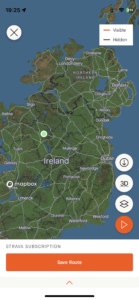 |
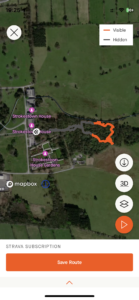 |
||||
| Today’s overview location (The green mark shows the location of our route) |
Close-up location (The orange line shows where we walked) (Click button below to download GPX of today’s walk as recorded, or see interactive map at bottom with elevations corrected): Strokestown and national Famine Museum |
||||
Commentary
(Summary blog only. Last full blog was Day 0368).
We had a free day today and felt that a foray slightly further afield was called for. So we got our maps and guidebooks out, and decided that a trip to one of our four remaining unvisited counties would fit the bill perfectly. Of the four, Roscommon was the closest and easiest to access, and furthermore, Val realised that the National Famine Museum was sited in Strokestown, right in the middle of the county. This was somewhere we had been wanting to visit for some time.
So we got up reasonably early and headed off down the M6, M4 and N5 to check it out. Despite being closer to Donegal than Dublin, it was a very easy sub-2 hour drive and we were there easily in time for the 12 noon tour of the house.
Strokestown House belonged to the Mahon family for centuries but eventually mounting debts forced the last occupant to leave in 1981. It is now owned by a philanthropist, Jim Callery, and it is open to the public but only on one of the official guided tours. It’s quite an interesting place, with may original artefacts on display. But it is musty, cold, and has an air of decay. It’s impressive and interesting, but Russborough House in Wicklow (which I think had the same designer) is incomparably better.
After lunch in the café, we had a look round the famine museum itself, which is fascinating. The museum is sited here because one of the previous owners of the house, Denis Mahon, evicted 3000 tenants from his land in 1847, at the height of the famine, and forced many of them to walk to Dublin via the Royal Canal to catch ships to Liverpool and on to Canada, where they were supposed to create new lives. Almost half of them died en route and in the end Mahon also lost his life in a gun ambush later in 1847.
We had a look round the woodlands and walled gardens before spending a few moments browsing the shop then heading back to Malahide. On the way we stopped off to have a quick look at the ruinous Norman castle at Roscommon. Just time for a quick walk round the keep but it was getting late, and cold, by this stage so we didn’t linger.
A very interesting thought provoking and slightly sad day out.
(Oh and by the way in case you were wondering how yesterday’s referenda turned out – there was a strong (68%) “no” vote to both proposals, which was unexpected, and a relatively high (44%) turnout, which was also unexpected. Just shows you should never hold referenda unless you’re pretty sure what the result will be)
Today’s photos (click to enlarge)
Interactive map
(Elevations corrected at GPS Visualizer: Assign DEM elevation data to coordinates )
Max elevation: 56 m
Min elevation: 49 m
Total climbing: 25 m
Total descent: -25 m
Total time: 00:17:43
